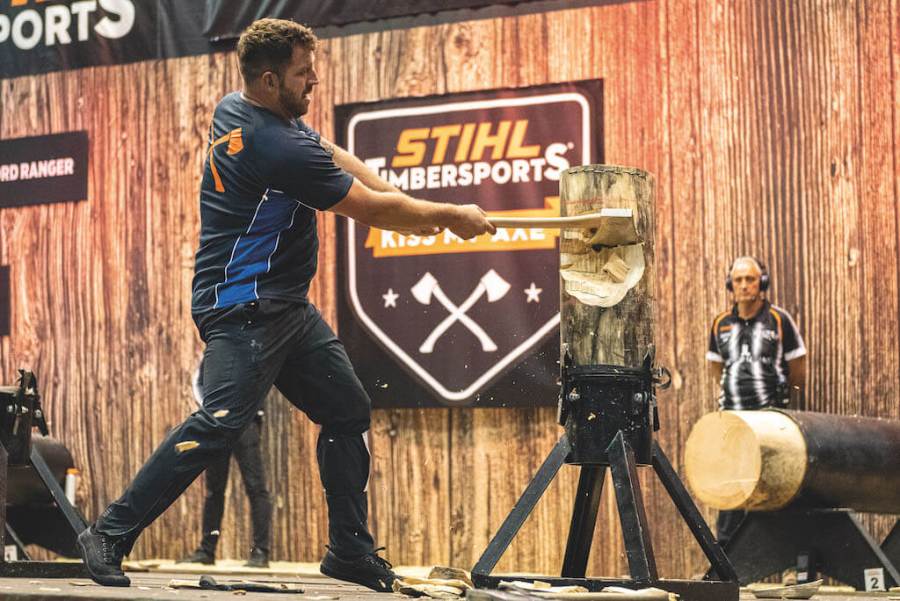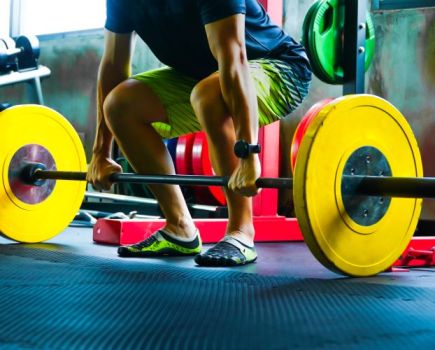Graham Turner is a Timbersports competitor and member of Team GB. In 2022, the 36-year-old became the first Scot on the winners’ podium in the history of the STIHL British Timbersports Championship, securing second place.
Build the functional strength of a Timbersports athlete with these best bodyweight exercises
We caught up with him ahead of the tenth British Championships…
Men’s Fitness: Most young lads grow up wanting to be footballers – was Timbersports always the goal for you?
Graham Turner: Ha, no! Though as a child, I had a strong sports background, particularly in golf and rugby. After a couple of frustrating years in golf, I quit, turning my focus back to rugby. But later, running my own business and sustaining several injuries made me reconsider the risks of that sport, too.
MF: So what made you pick up an axe?
GT: In 2018, I discovered Timbersports at the Royal Welsh show. One year later, after successfully getting through a selection day and several training camps, I competed in the newcomers category. Although I didn’t perform spectacularly, the thrill of it drew me in.
MF: And from there it all took off?
GT: Well, not quite. I was gearing up to compete further when the pandemic struck. I used the lockdown in 2020 to intensively train and improve. Despite limited local competitions due to restrictions, I saw a significant improvement in my skills. When competition resumed in 2021, I was able to prove my ability and qualify as a professional Timbersports athlete.
MF: What is the appeal of this sport?
GT: Timbersports is unique in that it’s you versus the log, not other competitors. Although there’s a bit of luck involved in the nature of the log you get, it’s largely about your skill and how you handle it. The camaraderie between competitors is incredible – everyone’s supportive of one another.
MF: What’s required to succeed?
GT: Initially, I thought strength was key. But as I got into it, I realised this sport requires high-level fitness, flexibility and mental alertness to execute the perfect chop, especially under pressure.
It requires diverse physical training, due to varied disciplines. It’s not about being the fastest or strongest – it’s more about having endurance and good recovery. For example, one competition involves four back-to-back events to be completed in under two minutes. It’s tough, but rewarding.
MF: How do you balance Timbersports training with a physical job?
GT: I step up strength work in the summer, going five times a week and chopping logs twice. In addition, I work a labour-intensive job as a fencing contractor. When it’s competition time, I’ll increase my chopping practice in the evenings and on weekends.
My gym routine includes three weights sessions and two cardiovascular sessions weekly. They’re not about lifting huge weights, but more about conditioning the muscles. Along with the chopping sessions, the goal is to improve my overall fitness, allowing me to operate at peak levels for longer periods. My ankle injuries hinder certain exercises, such as running, but I’ve compensated with biking, skiing and rowing – all with the aim of raising my base aerobic fitness.
The tenth STIHL TIMBERSPORTS® British Pro Championship takes place at the Royal Three Counties show in Malvern on 17 June. Check out the STIHL Facebook page to find out how Graham Turner gets on.







